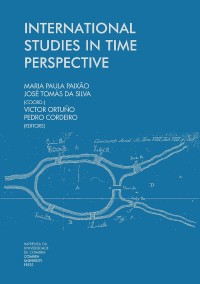Please use this identifier to cite or link to this item:
https://hdl.handle.net/10316.2/38610| DC Field | Value | Language |
|---|---|---|
| dc.contributor.author | Strizhitskaya, Olga Y. | |
| dc.contributor.author | Petrash, Marina D. | |
| dc.date.accessioned | 2016-02-05T12:22:47Z | |
| dc.date.accessioned | 2020-09-09T00:36:59Z | - |
| dc.date.available | 2016-02-05T12:22:47Z | |
| dc.date.available | 2020-09-09T00:36:59Z | - |
| dc.date.issued | 2013 | - |
| dc.identifier.isbn | 978-989-26-0668-2 | |
| dc.identifier.isbn | 978-989-26-0775-7 (PDF) | |
| dc.identifier.uri | https://hdl.handle.net/10316.2/38610 | - |
| dc.description.abstract | The current study presents research on future time ambiguity and its relation with personality characteristics. Ambiguity of future was traditionally considered to be a stressful factor. Our study revealed that with concern to ambiguity, respondents could be divided into 3 groups: (1) those having a clear idea of their future; (2) those having no idea of the future; (3) those whose attitude is perceiving the future as ambiguous. The sample was initially divided into two: young adults (aged 17-20, n=60), older adults (aged 45-60, n=187). Different content of the future in these 3 groups was revealed. An analysis of personal characteristics and coping strategies revealed that the fi rst and third groups, though using different mechanisms, show quite constructive and adaptive strategies of behavior, while the less adaptive group appeared to be the second. Lifespan analysis showed that though in both age samples the fi rst and third groups are most adaptive, they are still using different mechanisms. Results showed that ambiguity remains quite an underdeveloped construct, which considers positive and negative components, among which ambiguity as unclearness of future time plays more of a negative role, and the conceptual attitude to the future as unidentifi ed and undetermined has a positive effect. | eng |
| dc.language.iso | eng | - |
| dc.publisher | Imprensa da Universidade de Coimbra | por |
| dc.relation.ispartof | http://hdl.handle.net/10316.2/38604 | por |
| dc.rights | open access | - |
| dc.subject | types of time ambiguity | eng |
| dc.subject | adult development | eng |
| dc.title | Future time ambiguity types within younger and older adults | por |
| dc.type | bookPart | por |
| uc.publication.collection | Ciências Sociais | por |
| uc.publication.firstPage | 65 | - |
| uc.publication.lastPage | 70 | - |
| uc.publication.location | Coimbra | por |
| dc.identifier.doi | 10.14195/978-989-26-0775-7_6 | - |
| uc.publication.section | Part 1 – Time perspective and human development: adaptative functioning and risk behaviors across the life-span | por |
| uc.publication.digCollection | PB | por |
| uc.publication.orderno | 6 | - |
| uc.publication.area | Ciências Sociais | por |
| uc.publication.bookTitle | International studies in time perspective | - |
| uc.publication.manifest | https://dl.uc.pt/json/iiif/10316.2/38610/207120/manifest?manifest=/json/iiif/10316.2/38610/207120/manifest | - |
| uc.publication.thumbnail | https://dl.uc.pt/retrieve/11111422 | - |
| uc.publication.parentItemId | 54587 | - |
| uc.itemId | 69440 | - |
| item.grantfulltext | open | - |
| item.fulltext | With Fulltext | - |
| Appears in Collections: | International studies in time perspective | |
Files in This Item:
| File | Description | Size | Format | |
|---|---|---|---|---|
| future_time_ambiguity_types_within_younger_and_older_adults.pdf | 3.9 MB | Adobe PDF |  |
Items in DSpace are protected by copyright, with all rights reserved, unless otherwise indicated.
